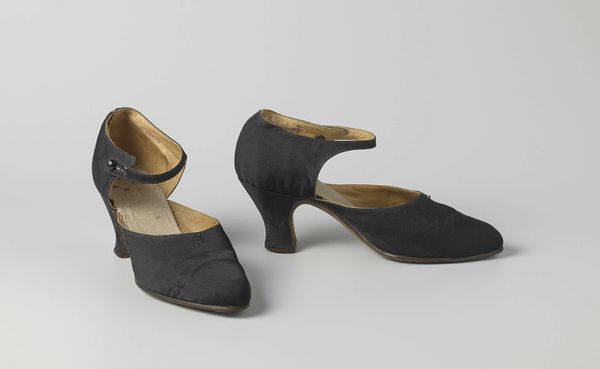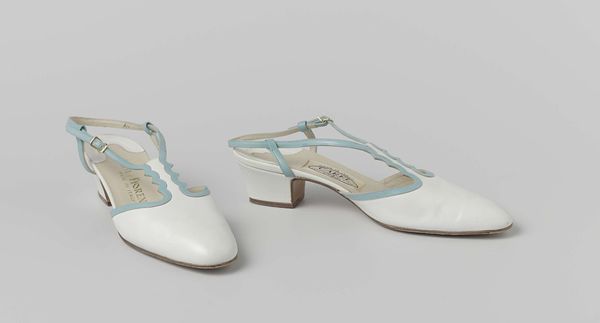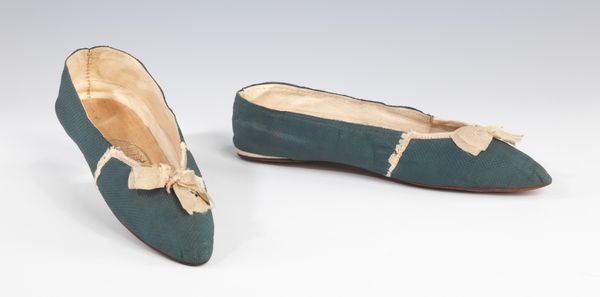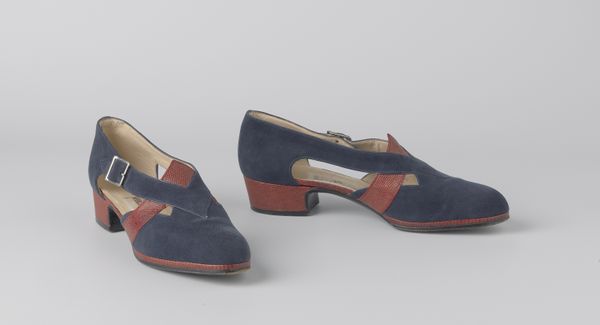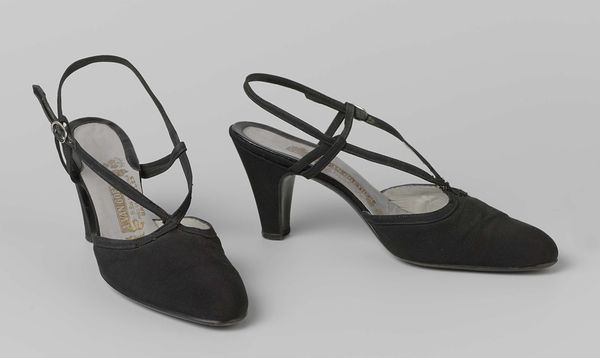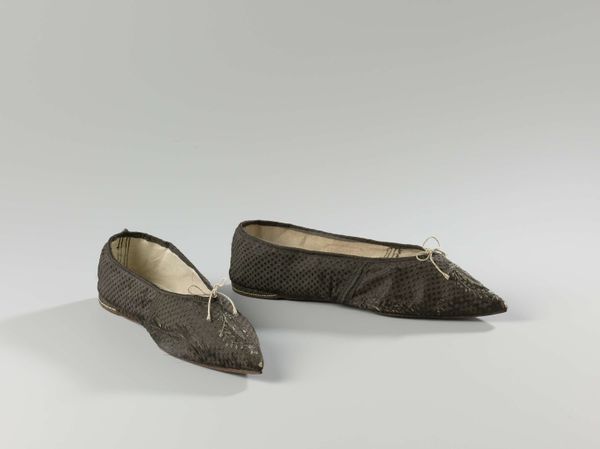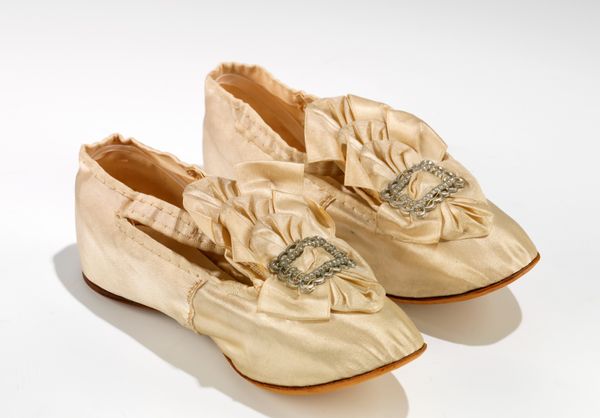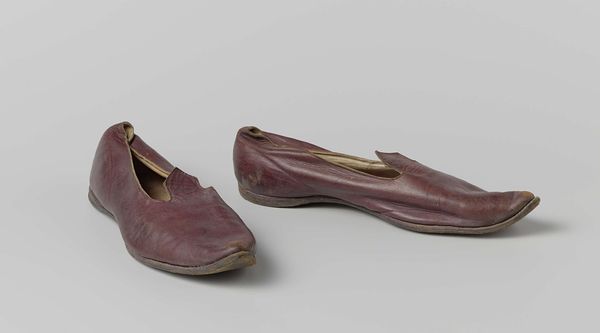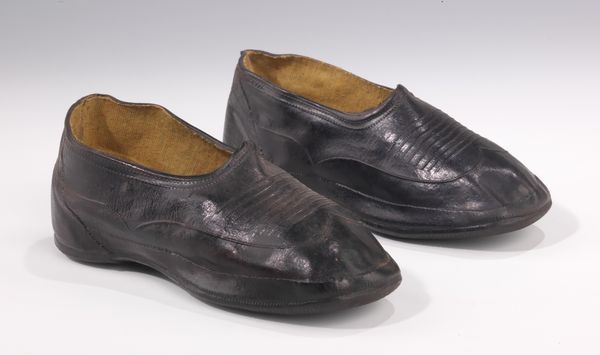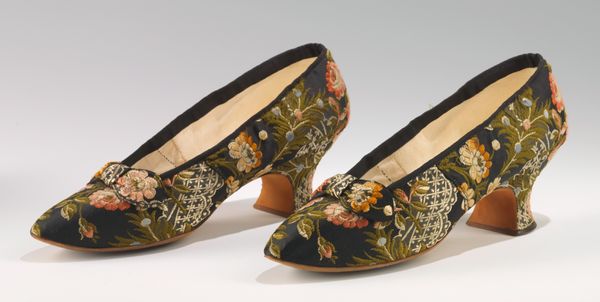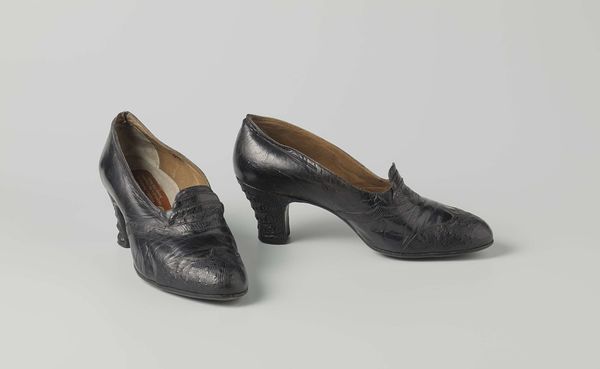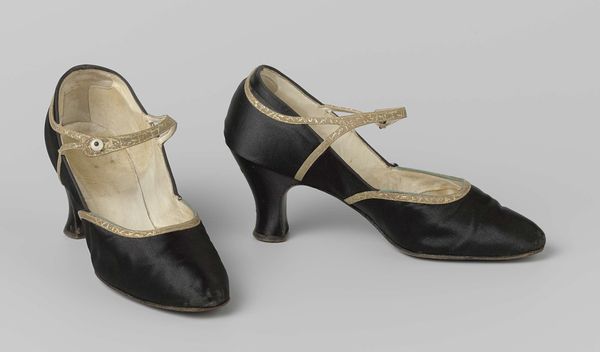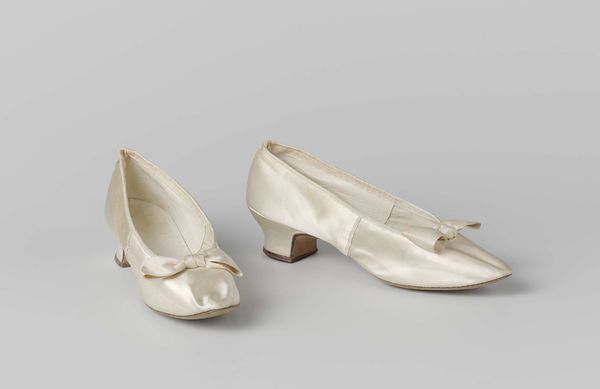
Dameschoen van blauwe wol met band achter de hiel en wreefband met strik c. 1950 - 1962
0:00
0:00
textile
#
3d printed part
#
fashion mockup
#
product fashion photography
#
virtual 3d design
#
textile
#
product design photgrpaphy
#
wearable design
#
metallic object render
#
product mock up
#
designed for kid
#
clothing photo
Dimensions: length 24.6 cm, width 7.6 cm, height 5.2 cm
Copyright: Rijks Museum: Open Domain
Curator: This piece, from between 1950 and 1962, presents us with a women’s shoe of blue wool, made by the Etoile shoe manufacturer, complete with a strap behind the heel and another over the instep, tied with a bow. Editor: My first impression is how faded the shoe's color is; it evokes a sense of nostalgia, a story of the past gently softened by time. The wool makes me think about labor and how class impacts everyday life. Curator: The faded color indeed speaks volumes. Blue, in various traditions, has signified both tranquility and sorrow. In Christian iconography, particularly in depictions of the Virgin Mary, blue represents purity, faith, and hope. These shoes, therefore, may have once symbolized these virtues for the wearer, a sort of silent prayer accompanying her every step. Editor: I agree, and that historical significance is powerful. These shoes prompt thoughts about how fashion, particularly women's fashion, is intertwined with gendered expectations of the period. The small bow adds an element of compliance; one might wonder about the social codes imposed upon women through their clothing choices. Were these shoes symbolic of a restrictive elegance? Curator: That is a compelling question. The bow is particularly telling, being a symbol of binding, promises, and agreements. Beyond its aesthetic appeal, it might reveal societal constraints. And note that blue can also symbolize the Virgin archetype: protection, comfort, unconditional love. Was the wearer a mother? Or wishing for a comforting, perhaps unavailable, mother? Editor: That’s an interesting angle, and certainly, accessories like these functioned within complex networks of signification. They marked belonging, aspiration, but also, possibly, subjugation to trends. We also can consider who was producing these. Labor conditions should not be ignored when contemplating a ‘simple’ woolen shoe. Curator: Absolutely. Such an analysis enriches our understanding. Ultimately, the symbol is alive, ever shifting with our perspective. Thank you. Editor: Yes, and this examination underscores how personal objects, like this shoe, offer pathways into the intricate social narratives of the past. Thank you.
Comments
No comments
Be the first to comment and join the conversation on the ultimate creative platform.
